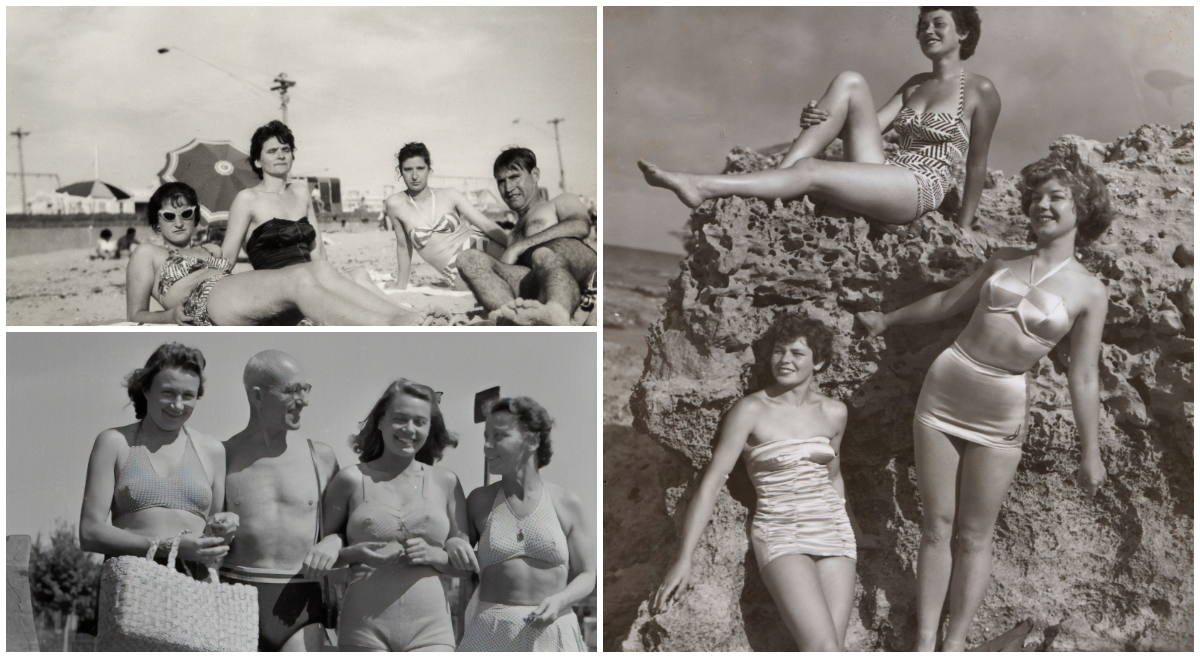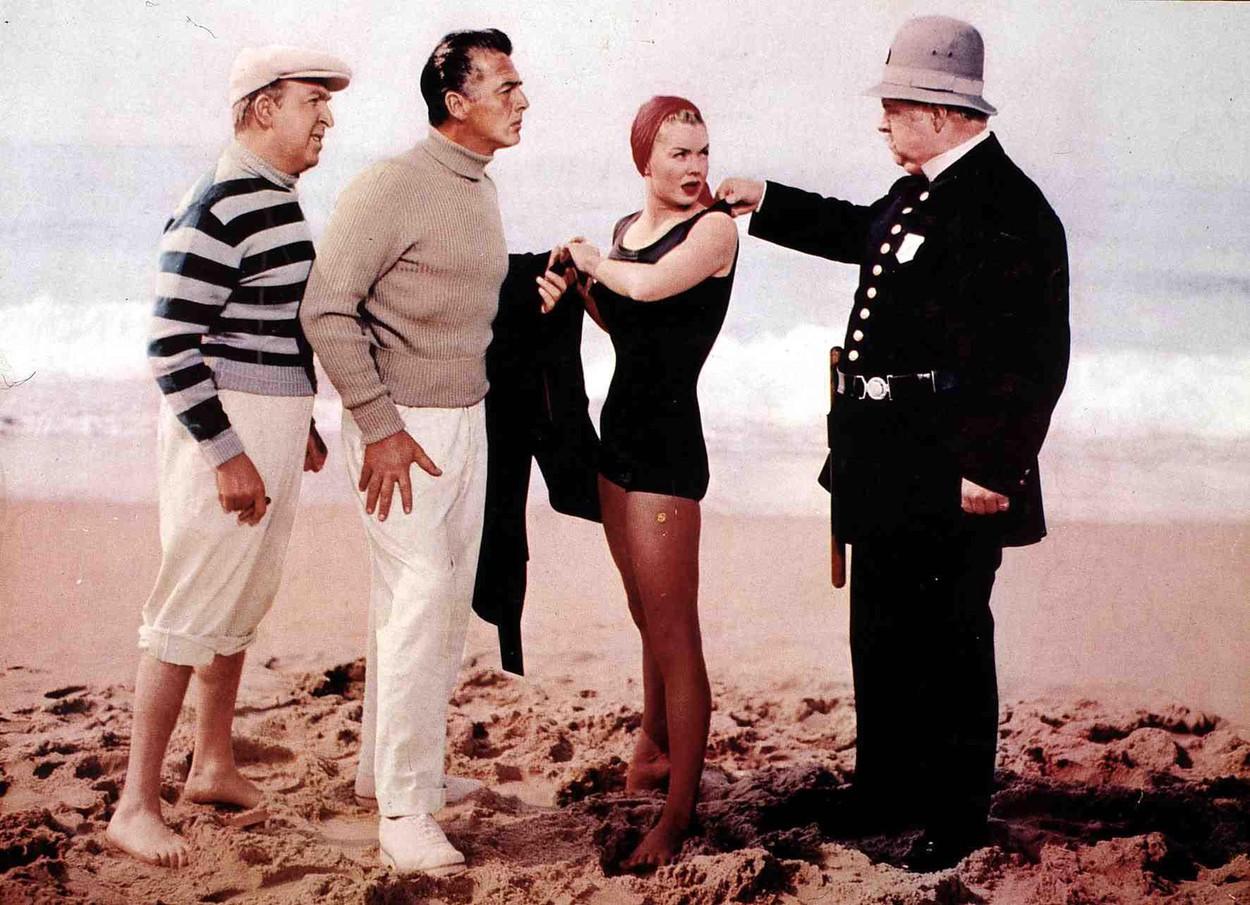History of the Swimsuit: How a Piece of Fabric Caused So Much Fury, Controversy and Bans

The history of the bathing suit has much to do with its shortening, and it is almost incredible how much energy, proofs, arguments, and demonstrations have been expended on so much a small piece of cloth.
Although in ancient times people mostly bathed naked, bikinis also existed in ancient Rome. A fourth-century Sicilian villa preserves a mosaic showing dancing girls wearing ribbons across their breasts and a type of panty made from a folded piece of cloth. It is believed that ancient bikinis were used during parties and sports that some women engaged in, but also during bathing.
View this post on Instagram
But official bathing suits appear much later, in the 18th century. At that time men still bathed naked, but women wore linen shirts as bathing suits. The first true bathing suits were made of wool and cotton and were quite heavy when wet.
In the beginning, the colors of bathing suits were red, blue or black. Bathing suits covered the whole body, and not just for propriety. Namely, the tanned skin was not fashionable at that time, but was considered "farmer's".
View this post on Instagram
An Australian swimmer shocked the world with a two-piece swimsuit
The one-piece bathing suit dates back to the late 19th century and was a major stepping stone in its history.
The new bathing suit, both men's and women's, had a collar, and the bottom cut to just above the knee. At that time, striped bathing suits also became fashionable.
The beginning of the 20th century brought a real revolution to this topic. The world famous Australian swimmer Annette Kellerman was arrested in 1907 for wearing a two-piece bathing suit on an American beach.

The first backless swimsuits were designed in the 1930s, which was very daring at the time. Until then, only two-piece bathing suits for women that covered everything were common, and men were allowed to wear a two-piece bathing suit with the top removed.
It wasn't until after World War II that two Frenchmen invented the modern midriff-baring bikini, and that was the next big stepping stone in swimwear history. Jacques Heim first invented the Atom two-piece swimsuit in 1946 – so named because it was a very small two-piece swimsuit.
View this post on Instagram
Then the engineer by name Louis Reard he made sure his bathing suit was even smaller and named his two-piece Bikini, after Bikini Island, where a nuclear test was conducted that year. Reard wanted the hype surrounding his new bikini swimwear to be just as "explosive."
The Frenchman was right - he really shocked the world when he first showed a sexy bikini on the catwalk in Paris. The invention made everyone forget about the Atom, and the bikini became the generic name for two-piece bathing suits in Europe. It took time for bikinis to become popular in the rest of the world and were initially banned in the US and Catholic countries.
View this post on Instagram
The sexual revolution of the 70s also brought about a revolution in swimwear
In the fifties of the last century, when women's bodies were more and more affirmed, the lower part of the bathing suit still reached above the navel, and the upper part completely covered the bust.
In the late 50s, the material Lycra was invented, which made swimwear that was much more durable, more comfortable to wear and easier to dry. In the 60s, curvy hips became even more prominent, and the song "Itsy-Bitsy-Teenie-Weenie-Yellow-Polka-Dot-Bikini" about the "pubic parts" in tiny beach bikinis became a big hit.
View this post on Instagram
This attitude towards swimwear changed during the sexual revolution of the 1970s, and thus the history of swimwear changed forever. From then on, bikini tops were nothing more than bras. Sunbathing also became popular, so the more it was "discovered", the better.
In the late 70s, the one-piece bathing suit returned, but this time with a high neckline that accentuated the hips. In the 80s, see-through mesh was introduced and the topless bikini or "monokini" was accepted. It was also the decade of the thong bikini, also known as the "Brazilian" – a tiny thong bikini that leaves most of the rear exposed.
View this post on Instagram
At the end of the 20th century, the focus returned to practical swimwear and classic one-piece swimsuits were being worn again, but skimpy bikinis were still in vogue for the beach. The 1990s saw the introduction of the Tankini for women – a combination of a tank top and bikini bottom.
Since the early 2000s, there's been no limit to the range of swimwear you can buy. All types of swimwear are designed for all body shapes and sizes.


